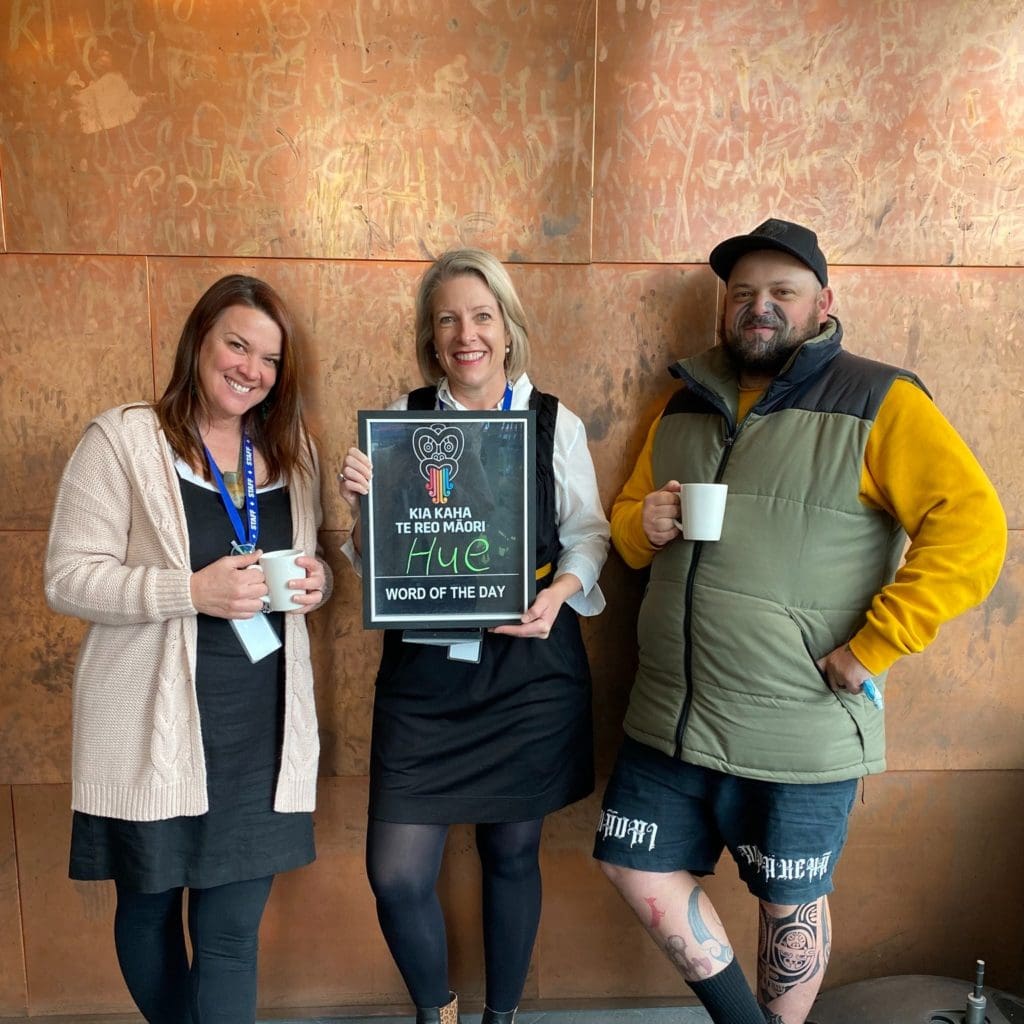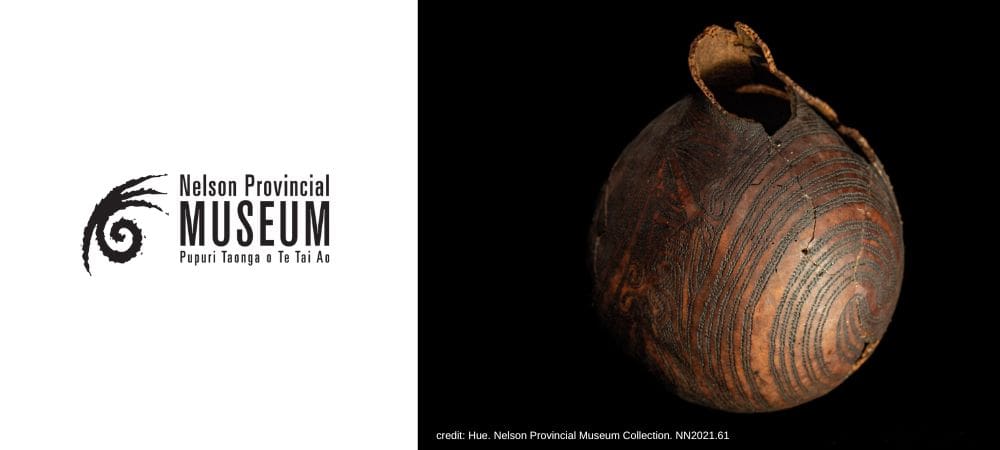The beginning of Te Wiki o te Reo Māori – Māori Language Week!: Nelson Provincial Museum
Yesterday our team celebrated the first day of of Te Wiki o te reo Māori with a shared kai and spoke about our reo Māori aspirations for the week ahead and for the future.
Staff shared their favourite kupu Māori (Māori word), shared plans for a weekly staff waiata (singing) session at the Museum and spoke of whakatauki (phrases) they were going to use this week. Kawhe (coffee) lovers in the team committed to ordering their coffee in te reo Māori (He kawhe koa – in case you were wondering?).
Today marks the beginning of Te Wiki o te Reo Māori – Māori Language Week!
To celebrate the 47th year of Te Wiki o te Reo Māori, we would like to share a selection of taonga (treasures) with you, profiled by our Kaitiaki Taonga Māori (Māori Taonga Collections Manager) Hamuera Manihera.
Today, Mane (Monday), we bring you the Hue.
Hue (tahā)
He tini ngā ingoa mō te hue, otirā, he mana tōna i roto i te ao Māori. He waka kawe i te wai, he ipu mō te kai tahu (kākā me te kererū). Ka whakangūngūa ngā hue e ngā kaitā moko kiri i mua i te tānga ki te kiri tangata. He pēnei te kiri o te hue ki te kiri tangata.
Ko ngā tauira ki runga i te hue nei, he rite ki ngā tauira o te puhoro, he raperape me te mangopare.
Hue (calabash, gourd)
Hue have many names and many important roles within te ao Māori. They were used as water carriers to hold preserved foods (kākā and kererū), and the hue was also utilised by moko practitioners as means of practicing the application of moko to skin. The skin of the hue is soft like human skin.
The patterns seen on this hue are similar to what you would see on a puhoro – the raperape and mangopare.
? credit: Hue. Nelson Provincial Museum Collection. NN2021.61



This Post Has 0 Comments